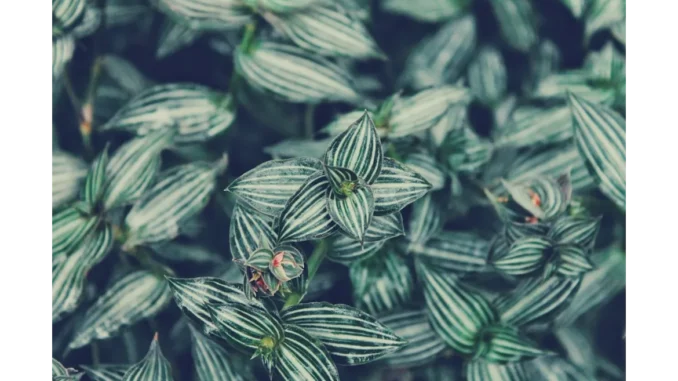
Cultivating a Backyard Forest Garden: Expert Tips for a Self-Sustaining Ecosystem
Creating a low-maintenance, self-sustaining ecosystem with edible plants in your backyard can transform your outdoor space into a haven of biodiversity. Forest gardening, a method inspired by natural woodlands, offers an intricate yet efficient approach to gardening, particularly beneficial for those with limited space. Even a city balcony or rooftop can be converted into a thriving forest garden. Follow our expert advice to discover how to design your own forest garden and which plants to include.
Embrace Nature’s Layers
A forest garden mimics the natural layering found in woodlands, utilising every inch of space to support a variety of plant types. Christina Chung, horticulturist and author of The Layered Edible Garden, advises, “Head out to a natural area and look around. Instead of the sections in a traditional vegetable garden, you’ll find trees, shrubs, herbaceous perennials, small ground covers, and vines all growing together.”
1. Plan Around Existing Flora
Begin by assessing your current garden layout and identifying areas for improvement. Christina Chung suggests, “You may be surprised how much space is being taken up by old hedging plants that you don’t like much anyway.” Reassessing your space can reveal unexpected opportunities for enhancement.
Drafting a detailed plan is essential, outlining which plants to keep and which to replace. Breaking down your project into manageable tasks can make the transformation less daunting. For instance, you might start by planting a serviceberry tree (Amelanchier) or one of the best native dogwood trees.
2. Incorporate Multiple Layers
An ideal forest garden comprises eight layers, from towering canopy trees to subterranean root crops. While not every garden can accommodate all layers, even a few can significantly enhance your space.
The highest layer consists of large canopy trees, such as walnut, though sub-canopy trees like quince or apple are more practical for smaller urban yards. Below these, shrubs with an edible focus, such as raspberries or currant bushes, thrive. Herbaceous perennials like asparagus and cardoon, along with climbers such as runner beans and grapes, add further diversity.
Ground covers, such as thyme and wild strawberries, and root crops like carrots and parsnips complete the ensemble. Christina Chung notes, “This style of gardening is all about making a space that works for you on every level.”
3. Select a Diverse Range of Plants
A successful forest garden features a variety of plants, including vegetables, fruits, herbs, and flowers. Dani Baker, owner of Cross Island Farms and author of The Home-scale Forest Garden, advises, “When you choose plants that match your hardiness zone and the habitats you have available, you are most likely to be successful.”
Incorporating shade-tolerant perennials and sun-loving plants ensures a balanced ecosystem. Hardy native plants, designed to thrive in shaded conditions, often have the added benefit of being edible.
Utilise Space Efficiently
Maximising space is crucial, especially in smaller gardens. Layering plants not only increases productivity but also adds visual interest. Christina Chung recommends, “You can even design a layered garden in a cluster of containers on a balcony.”
Enhance Biodiversity
Forest gardens create a mutually beneficial environment for wildlife, particularly pollinators. Christina Chung emphasises, “Adding less common species to your garden will radically increase the biodiversity of your local ecosystem.”
This diversity fosters a healthier ecosystem, attracting beneficial insects and providing food for birds and other wildlife. A beautifully diverse garden not only feeds you but also enriches the natural world around you.
Maintain Healthy Soil
Healthy soil is the foundation of a thriving forest garden. Dani Baker highlights the importance of leaving the soil undisturbed, allowing bacteria, fungi, and earthworms to break down organic matter and nourish plant roots.
“In nature, the ground is completely covered with some form of organic matter,” says Dani. “Think of the floor of a dense wood blanketed with a deep layer of fallen leaves or pine needles.”
By avoiding disruptive practices like annual digging and replanting, you encourage a natural cycle of nutrient replenishment. This approach not only preserves soil health but also supports beneficial insects and helps maintain moisture levels.
FAQs
Is a forest garden low maintenance?
Yes, once established, a forest garden is designed to be self-sustaining, much like native woodland. While some tasks like mowing and pruning may be necessary, the overall maintenance is minimal. Groundcover plants and natural mulch reduce the need for weeding and watering, allowing you to enjoy the rewards of your garden with less effort.
In conclusion, transforming your backyard into a forest garden is a rewarding endeavour that promotes biodiversity, utilises space efficiently, and requires minimal maintenance once established. By following expert advice and incorporating diverse plant layers, you can create a thriving, self-sustaining ecosystem that benefits both you and the environment.


Be the first to comment